Caring for Your Small Cage Bird And Keeping It Healthy
Ron Hines DVM PhD

These small birds have been kept as pets for centuries. The two most important factors for success in keeping them are proper diet and proper caging.
Birds really enjoy supervised activities inside and outside of the home. However, birds do not do well when kept loose in your home. Houses are just too full of potential dangers including toxic objects, plants, mirrors, ceiling fans, electrical, water and chemical hazards and accidental access to the out-of-doors for your bird’s long-term survival.
I generally suggest my clients visit an experienced aviculturist (bird breeder) before selecting a cage or determining where is should be location in your home.
 Should My New Pet Bird’s Wings Be Clipped?
Should My New Pet Bird’s Wings Be Clipped?
Birds whose wings have been clipped have fewer accidents in their home than fully flighted pets do. Loose, flighted, birds are also more prone to escape through open doors and windows. They rarely if ever will fly back. They may also crash into windows and mirrors injuring themselves.
 What Kind of Cage Should I Buy?
What Kind of Cage Should I Buy?
Finches do well in cages constructed of powder-coated or painted wire. Hook-billed (parrot-like) birds can ingest sufficient zinc from galvanized wire cages to cause a disease known as “New Cage Syndrome” or zinc toxicity.
Cages constructed with wooden parts are really unsuitable for both types of birds. Hook-billed pets (parrots) will often eat or gnaw at the wood and wood offers a residence to bacteria and mold when even when it is used in finches and canary cages. Wood cages are also very difficult to clean and sanitize.
 How Large Should My New Feathered Friend’s Cage Be?
How Large Should My New Feathered Friend’s Cage Be?
I like a cage that is a minimum of four times as long, high and wide as the bird it holds. For every additional bird, I increase that by at least twenty percent. Ornamental and decorative cages pose special hazards to birds. First, ornate cages often have crevices between the bars that can trap your bird’s head. Secondly, coating used to paint ornamental cages may contain toxic materials. They are generally manufactured in low-wage countries where no monitoring of toxic pain contents is performed. Thirdly, as I mentioned, ornamental cages are usually difficult to effectively clean and sanitize. The bar spacing of the cage you purchase should be approximately one-half the diameter of your bird’s head. Most ornamental cages for sale in pet stores and online are very beautiful pieces of furniture – but entirely impractical for keeping birds safe and happy.
Water and food container can be plastic for finches, for hook-billed birds they should be constructed of lead-free ceramics, glass or stainless steel. Eventually, everything but stainless steel will be dropped, cracked or become brittle from the UV of sunshine. If they don’t your pet is not getting exposed to sufficient sunshine to keep it healthy. Full spectrum lamps are unreliable substitutes for the real thing.
 Products You Should Avoid Having Near Your Bird
Products You Should Avoid Having Near Your Bird
Ingested toxic household products are more of a threat to curious hook-billed birds, that enjoy gnawing on the objects around them than to finches and other straight-beaked birds. However the fumes of some of these products appear more toxic to finches, budgies and canaries, probably because of their smaller size and higher metabolic rates. As I mentioned previously, the zinc coating of galvanized metal can be highly toxic to birds when it is ingested. Lead is also a major cause of poisoning in cage birds. Objects that contain lead include stained glass windows, trinkets and lampshades, house paints manufactured prior to 1978, the clappers within toy bells, fishing sinkers, die-cast toys containing zinc or lead and costume jewelry.
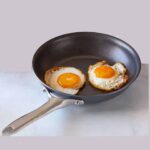
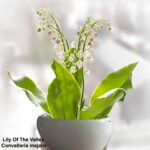
Avocado pits and, in some instances, avocado meat are said to be toxic to birds – although I have never seen a confirmed case of avian toxicity due to avocados. Any object containing long fiber strands such as carpet or macrame can wrap around your birds leg or wing, over time causing severe damage. Those fine threads can be very hard to see.
 What Should I Feed My Pet Bird?
What Should I Feed My Pet Bird?
Inadequate diet is the most common cause of disease in cage and aviary birds. For the better part of the 17th through 20th centuries, birds were fed seed diets. Before that, they were fed a wide variety of the table scraps of the people that owned them. Consequently those early pets received a more varied and healthy diet. Commercial avian diets are usually composed of only a few grain types. Often, for economy, is grain that is in some way tainted, either too old and stale, or two high in mold content for human consumption. Not only can these industrially produced grains contain toxic products (fertilizer, weed killer, etc) they can also be deficient in the minerals and vitamins that all birds require.
In the late 1950s pelleted, higher-quality commercial bird diets came on the U.S. market. One of the first was the Lafeber line of hook-bill pellets developed by Dr. Ted Lafeber a veterinarian in Niles, Illinois. Unfortunately what the great variety of pet birds require in the way of nutrients, vitamins and minerals to remain healthy is still unknown today.
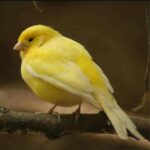
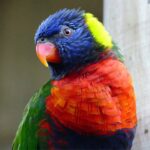
A good characteristic of pelleted diets is that the birds are forced to eat all the nutrients presented to them. Some reputable pelleted brands today include Mazuri®, Zupreem®, Roudybush®, Harrison’s® and LeFeber©. Food and water should be present for your birds throughout the day. When fed a pelleted or freshly prepared diet, grit is unnecessary.
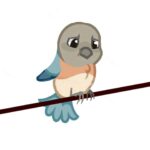 Loneliness And Boredom
Loneliness And BoredomAll species of birds that in Nature live in flocks suffer from boredom and loneliness when confined to a cage without a companion. If they were obtained early in their life and hand fed as infants, you and your family can substitute for their natural companions. If they were obtained near adulthood, they will never be happy living without their natural flock mates. That loneliness often leads to self-destructive behaviors. Things like overgrooming (chewing and plucking their feathers), mutilating their skin, pacing, screaming, over or under eating and eventually stress-related ill health. Unfortunately even when you then give them a larger cage, cage activities, toys or even a cage mate, those self-destructive behaviors remain. In parrot like birds repetitive pacing, head bobbing, rocking, swinging their head from left to right can all associated with loneliness and boredom.
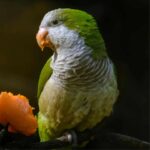
Caged birds do not get the exercise and normal toenail and beak wear that birds in the wild do. So, with time, their toenails will overgrow in length and may curl unnaturally. This leads to arthritic changes that can not be corrected. Every three months, a small portion of the toenail should be removed to compensate for inactivity.
Perches used in birdcages are generally much too small in diameter to allow proper nail wear. The diameter of the perches should vary and range from approximately the diameter of the birds foot when in a “fist” to three times this diameter. This puts the points or tips of the nails flat against the perch and accelerates ware. Perches that do not taper and are all the same diameter eventually lead to foot pad calluses and ulcers as well as toe and lower foot arthritis. I avoid that by using natural branches, when they become soiled, discard and replace them.
Your bird’s toenails can be clipped with a human toenail clipper and the bird restrained in a bath towel. Nails should not bleed if small portions are removed frequently, Should bleeding occur, press the nail firmly into a moist bar of ivory soap. I have never seen a bird die or become ill from blood loss when its toenails were clipped cautiously in a frequent fashion. Concrete perches may eliminate the need to clip you bird’s toenails. Sand paper coated perches generally are ineffective and become messy. When birds are presented to me with extremely overgrown toe nails, I clip them drastically and they do bleed. A finger pinch on the toe prevents that bleeding as long as the pressure continues to be applied. With my finger still in place, I cauterize the “blood vein” in each toe as I go. This needs to be done by a highly experienced person. Do not attempt it.
Wing Feather Clipping For Your Pet Bird’s Safety:
When trimming a bird’s wing feathers, I leave the first 4 or 5 long feathers (primary feathers) of each wing intact and remove snip off about 10 of the secondary feathers at the point where they unfurl (beginning of the fluff) leaving the secondary feathers intact closer to the body. That means that a bit less than one quarter of the length of the feather remains. This allows the bird to flap gently to the ground, should it fall. It also retains the birds normal silhouette and feather conformation when its wings are folded. Wing feather clipping prevents collisions with objects in the home such as mirrors, open toilets, walls and ceiling fans. It also prevents the bird’s accidental escape through an open door or window. Feathers that are still in their growth phase (blood feathers) must not be cut. If any blueish blood feathers are accidentally cut they must be plucked out and the resulting skin defect pinched until the bleeding ceases.
Trimming Your Pet Bird’s Beak:
This is another procedure that should only be done by an experienced professional versed in the procedure. Occasionally, the beak of your bird may overgrow due to lack of vigorous use and gnawing. Trimming your bird’s beak is best left to a professional. I use a number 20, 15 or 11 scalpel blade. I hold the blade perpendicular to the bird’s bill and gently draw the blade along the beak from its cuticle to its point – much like hand planing a piece of wood with a drawknife. Repeated very fine passes along the beaks removes the loose and discolored material that accumulates over the living bill in birds confined to cages. If rosy areas appear too much tissue is being removed.
Where Should I Put My Pet Bird’s Cage?
Located the cage in an area where temperature remains fairly constant. There is no need to cover a bird’s cage at night unless temperature variation is extreme. I like to place cages in areas where natural lighting and conditions are good for the growth of a non toxic houseplant. An area adjoining your kitchen is often ideal for a single or pair of birds since the presence of people active in the area may relieve the bird’s boredom.
 Removal of Leg Bands
Removal of Leg Bands
When you are not keeping large numbers of identical birds, leg bands serve no useful purpose. Leg bands can become trapped in portions of the cage if they are of the open type. Closed leg bands, applied correctly to the bird foot when it was a chick are less of a problem. But any situation that causes the banded leg to swell or when originally applied too tight can compromize blood circulation to that foot leading to amputation. That is why I suggest a competent individual remove all leg bands. If you need to have a way to identify your pet should it escape or becomes lost, inquire about having it microchipped.
Should I Bathe My Pet Bird?
Almost all birds enjoy bathing. It removes excess dander and soil and stimulates preening and a sense of well-being. A shallow ceramic dish or plate makes an ideal bathtub. Baths should be provided a minimum of two times a week. If your birds is reluctant to bath, it can be misted off with a trigger-spray plant-misting bottle available from any home and garden center. Larger parrots can be trained to take a shower on the shoulder of their owner if their claw tips are smoothed. I use an emery board. Be sure a wet bird is not exposed to temperatures under 80F (26.7C).
 Do I Need To Give My Pet Bird A Vitamin / Mineral Supplement?
Do I Need To Give My Pet Bird A Vitamin / Mineral Supplement?
Birds that eat one of the popular pelleted diets I have mentions earlier or a home-prepared balanced diet do not need vitamin or mineral supplementation – even if the same company that sells the pellets also sells avian vitamins and suggests you use them. A possible exception would be a bird that is producing a clutch of eggs. These birds might benefit from a calcium supplement such as NeoCalGlucon added to their drinking water or a pinch of crushed calcium carbonate tablet sprinkled over their food. Overuse of vitamins and tonics containing vitamin A, D3, E or K or calcium are just as dangerous as providing too little.
 How Can I Recognize If My Pet Bird Is ill?
How Can I Recognize If My Pet Bird Is ill?
Any sudden or gradual change in activity or appearance in a mature pet bird may be a sign of illness. Some of those changes are:
 Weight Loss
Weight Loss
Your bird’s weigh should remain stable throughout their adult life. Thin birds are hard to recognize because their plumage tends to hide their thinness. Thin birds often have overlap of feathers down the center of their breast. The shape of their breast muscles is a sharp V, rather than concave curved U. Being a veterinarian, I simply weigh them from time to time and add that tho their health records. You can do that too with an accurate scale.
 A Change In Dropping Color Or Consistency
A Change In Dropping Color Or Consistency
A bird droppings will change rapidly in color and consistency when its diet changes because its intestinal tract is quite short. But assuming a steady diet of the same brand of pelleted diet or fresh produce, any change in color or consistency could be evidence of disease when accompanied by other abnormalities I mention.
 Discharges From Your Pet’s Eye(s), Squinting Or Swelling
Discharges From Your Pet’s Eye(s), Squinting Or Swelling
All discharges from the eyes are abnormal. They can be a sign of a dusty environment or infection in or in the tissues adjoining its eyes. Squinting is often a sign of eye inflammation. Swelling around the eyes is often a sign of sinus infection. Both eyes should appear exactly the same.
 A Discharge Or Change In The Shape and Diameter of the Your Pet’s Nostrils
A Discharge Or Change In The Shape and Diameter of the Your Pet’s Nostrils
Birds on a diet low in vitamin A often develop sinus, eye and nasal infections.
 Ruffled Feathers
Ruffled Feathers
Birds that sit motionless with their feathers ruffed are quite ill and need immediate veterinary care. Do not confuse this with periodic ruffling of their feathers as they shift into a more comfortable position.
 Sneezing
Sneezing
Birds will occasionally sneeze after scratching their nostrils. That is normal. However, birds that sneeze during inactivity often have a sinus infection or perhaps a vitamin A deficiency.
 Lack Of Appetite
Lack Of Appetite
This is usually a sign of illness. Birds are less likely to stop eating due to emotional stress the way people, dogs and cats do.
 Less Activity Than Usual
Less Activity Than Usual
An avian veterinarian or experienced aviculturist should be consulted when your bird’s normally activities lessens or it becomes lethargic and inactive. It is unusual for a bird to become inactive and not show other of warning signs of illness i list in this article.
 Carrying Its Wings Drooped Lower On Its Body
Carrying Its Wings Drooped Lower On Its Body
This is always a sign that the bird is ill in some physical way. When standing erect, one wing should not be held lower than the other. When that occurs, the problem is in the wing held lower.
 Blood In The Cage Bottom, Perch Or On The Bird’s Feathers
Blood In The Cage Bottom, Perch Or On The Bird’s Feathers
This is often a sign that a growing feather (blood feather) has been injured. These need to be firmly grasped at their base pinching a bit of the skin surrounding the feather follicle. The feather is then smartly plucked out with pressure remaining on the pinched tissue until bleeding ceases. Other causes of bleeding need to be explored by a veterinarian specializing in birds.
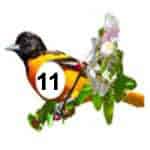
Both these conditions are very serious. They generally occur simultaneously. The bird needs to be taken directly to a veterinarian specializing in birds. I see many wild bird colission cases. When they come in in this condition, I immediately put them in an oxygen tent, concentrate on fluid replacement, temperature stabilization and tests to determine the cause.
 Lumps Anywhere On Its body
Lumps Anywhere On Its body
These are often tumors occur in older or obese birds. Some are serious and others benign. An avian veterinarian can examine your pet take a biopsy and let you know the seriousness of the condition.
 Swollen Feet Or Joints
Swollen Feet Or Joints
Gout is a common condition in birds feed too high a protein diet. This disease causes swelling and white plaques surrounding the joints of its feet and wings. The underlying problem is in their kidneys. Birds are acutely sensitive to kidney damage caused by the ingestion of NSAIDs. One in particular, diclofenac, is highly toxic to birds, but none of them are entirely safe at doses likely to lessen pain. If it has been dispensed, your bird’s blood uric acid level needs to be monitored.
 A Decrease In Grooming And Preening
A Decrease In Grooming And Preening
This can be a sign of stress or disease.
 A Decreased In Chirping, Singing Or Talking
A Decreased In Chirping, Singing Or Talking
This can be a sign of stress or disease.
 Sitting Motionless On The Floor Of Its Cage
Sitting Motionless On The Floor Of Its Cage
This is a sign of a very serious disease problem or illness.
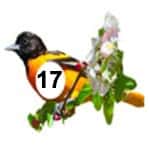 Falling From Its Perch Or Limping or Perching on One Favored Leg Consistently
Falling From Its Perch Or Limping or Perching on One Favored Leg Consistently
Falling from its perches can be due to generalized weakness or injury to a leg or wing. Injury to a leg is the usual cause of limping or perching on one leg. Many of these birds confine themselves to the floor of their cages.
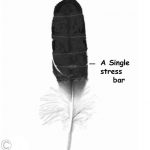 Stress Bars On Its Feathers
Stress Bars On Its Feathers
When your bird’s feathers are forming and still unfurled, They require a continuous supply of blood nutrients to develop normally. If on specific days your bird does not eat sufficiently or if on those days it does not receive sufficient protein in its diet, There will be bars of weak material striped across the feathers when they mature. Like you can see in the image below:
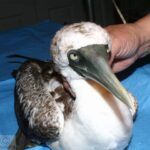 All Birds Are Experts At Masking Their Symptoms of Ill Health
All Birds Are Experts At Masking Their Symptoms of Ill Health
Exhibiting abnormal behavior or posture is an invitation for predators to attack them. It doesn’t matter if its a boobie like the one in the photo I treated or your parakeet. The high metabolic rate of birds and their tendency to mask symptoms of disease as long as they can mean that action must be taken immediately when any of the above signs are present. As a general rule, visible disease signs are more serious in birds than they might be in a dog, a cat or a human. Also, the high metabolic rate of birds makes infectious and non infectious illnesses progress more rapidly in birds. So a few day’s delay can mean the difference between life and death. Waiting a few days to see if thing improve by themselves is not a that bad decision in dogs, cats or people – but it is a very bad decision when your pet is a bird. When you take your bird to be seen by an avian veterinarian, try to bring it in the same cage it lives in at home. Don’t change or clean the cage or food containers before going to your appointment. And bring all the toys that it plays with.

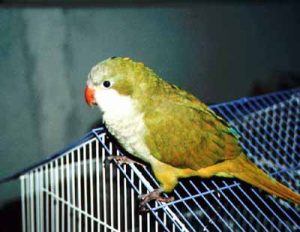
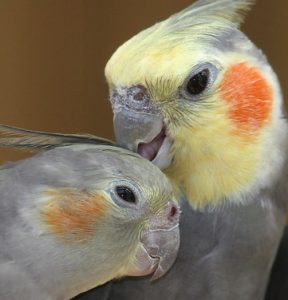
 Should My New Pet Bird’s Wings Be Clipped?
Should My New Pet Bird’s Wings Be Clipped?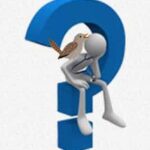 What Kind of Cage Should I Buy?
What Kind of Cage Should I Buy? How Large Should My New Feathered Friend’s Cage Be?
How Large Should My New Feathered Friend’s Cage Be?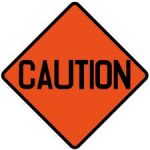 Products You Should Avoid Having Near Your Bird
Products You Should Avoid Having Near Your Bird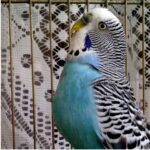 What Should I Feed My Pet Bird?
What Should I Feed My Pet Bird?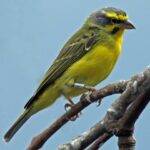
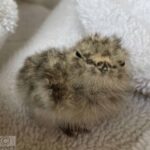 Do I Need To Give My Pet Bird A Vitamin / Mineral Supplement?
Do I Need To Give My Pet Bird A Vitamin / Mineral Supplement? How Can I Recognize If My Pet Bird Is ill?
How Can I Recognize If My Pet Bird Is ill?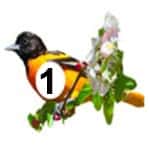 Weight Loss
Weight Loss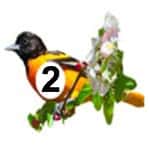 A Change In Dropping Color Or Consistency
A Change In Dropping Color Or Consistency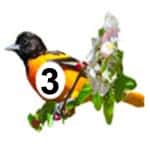 Discharges From Your Pet’s Eye(s), Squinting Or Swelling
Discharges From Your Pet’s Eye(s), Squinting Or Swelling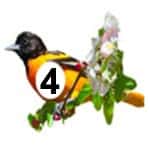 A Discharge Or Change In The Shape and Diameter of the Your Pet’s Nostrils
A Discharge Or Change In The Shape and Diameter of the Your Pet’s Nostrils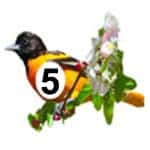 Ruffled Feathers
Ruffled Feathers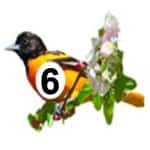 Sneezing
Sneezing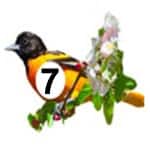 Lack Of Appetite
Lack Of Appetite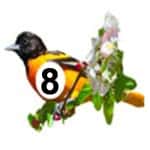 Less Activity Than Usual
Less Activity Than Usual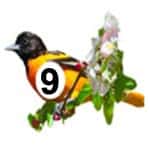 Carrying Its Wings Drooped Lower On Its Body
Carrying Its Wings Drooped Lower On Its Body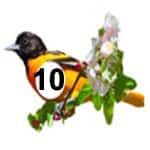 Blood In The Cage Bottom, Perch Or On The Bird’s Feathers
Blood In The Cage Bottom, Perch Or On The Bird’s Feathers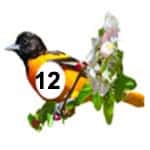 Lumps Anywhere On Its body
Lumps Anywhere On Its body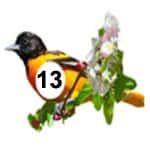 Swollen Feet Or Joints
Swollen Feet Or Joints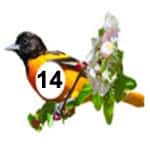 A Decrease In Grooming And Preening
A Decrease In Grooming And Preening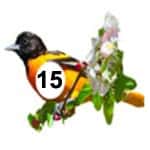 A Decreased In Chirping, Singing Or Talking
A Decreased In Chirping, Singing Or Talking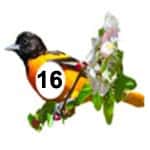 Sitting Motionless On The Floor Of Its Cage
Sitting Motionless On The Floor Of Its Cage Dear reader, Besides your donations, Visiting the products that Google chooses to display on this webpage helps me pay the cost of keeping this article on the Web. As you know, sites like mine that are not designed to make money are getting harder and harder to find. Best wishes, Ron Hines
Dear reader, Besides your donations, Visiting the products that Google chooses to display on this webpage helps me pay the cost of keeping this article on the Web. As you know, sites like mine that are not designed to make money are getting harder and harder to find. Best wishes, Ron Hines